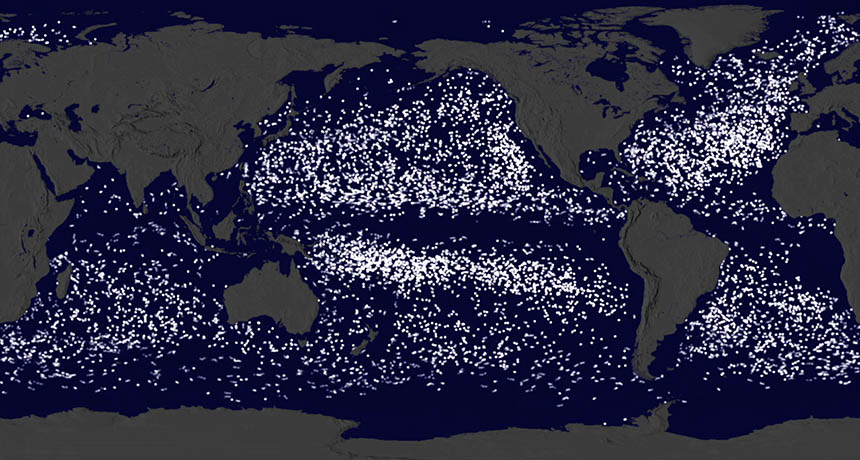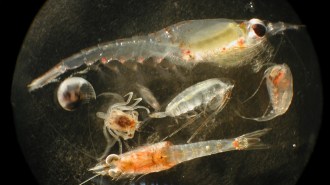Here’s where 17,000 ocean research buoys ended up
Visualization combines 35 years’ worth of tracking data into one buoy ballet

BUOY BALLET The journeys of thousands of ocean buoys (white dots) visualize the ocean currents that feed into Earth’s swirling ocean gyres, also known as ocean garbage patches.
NASA Scientific Visualization Studio




